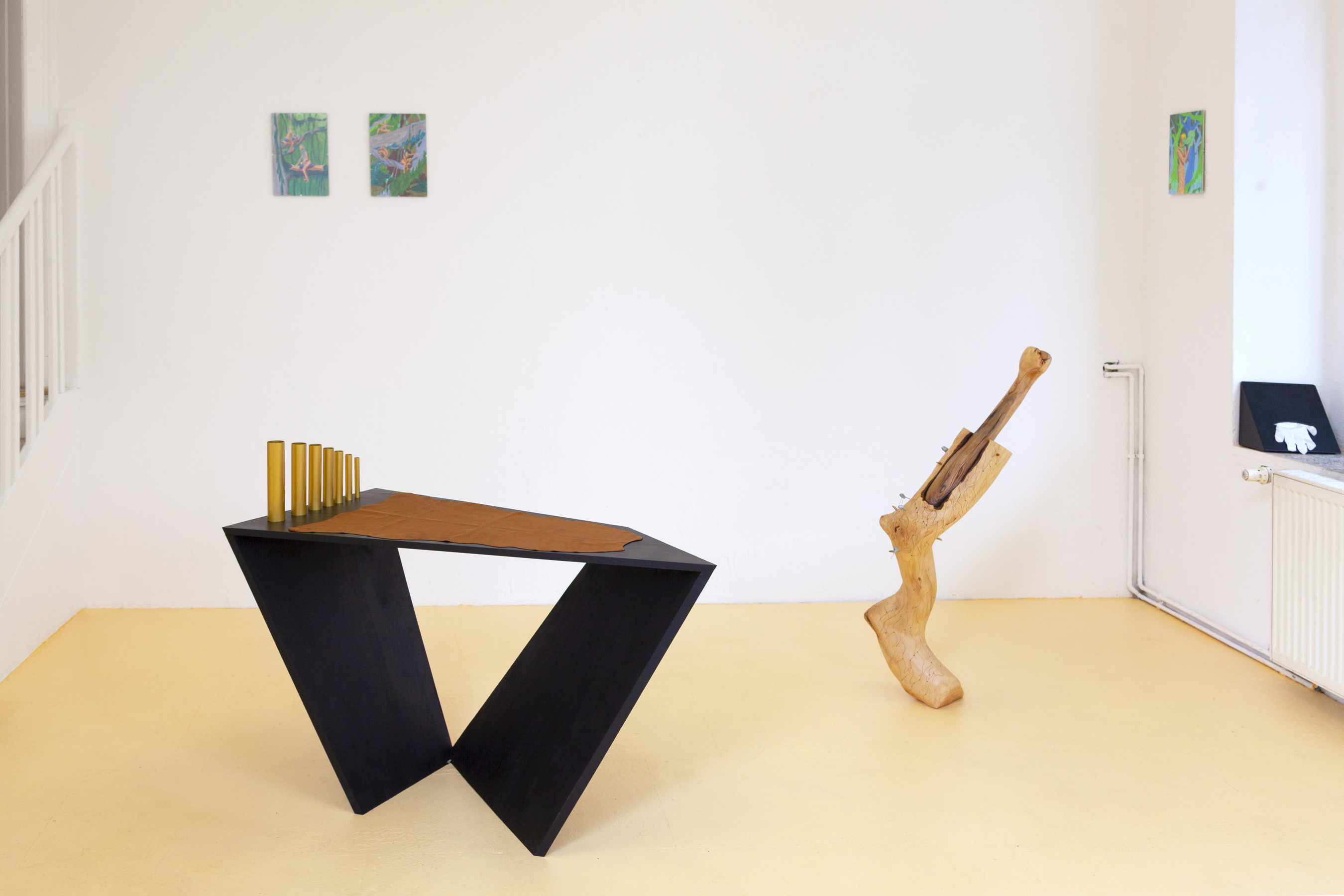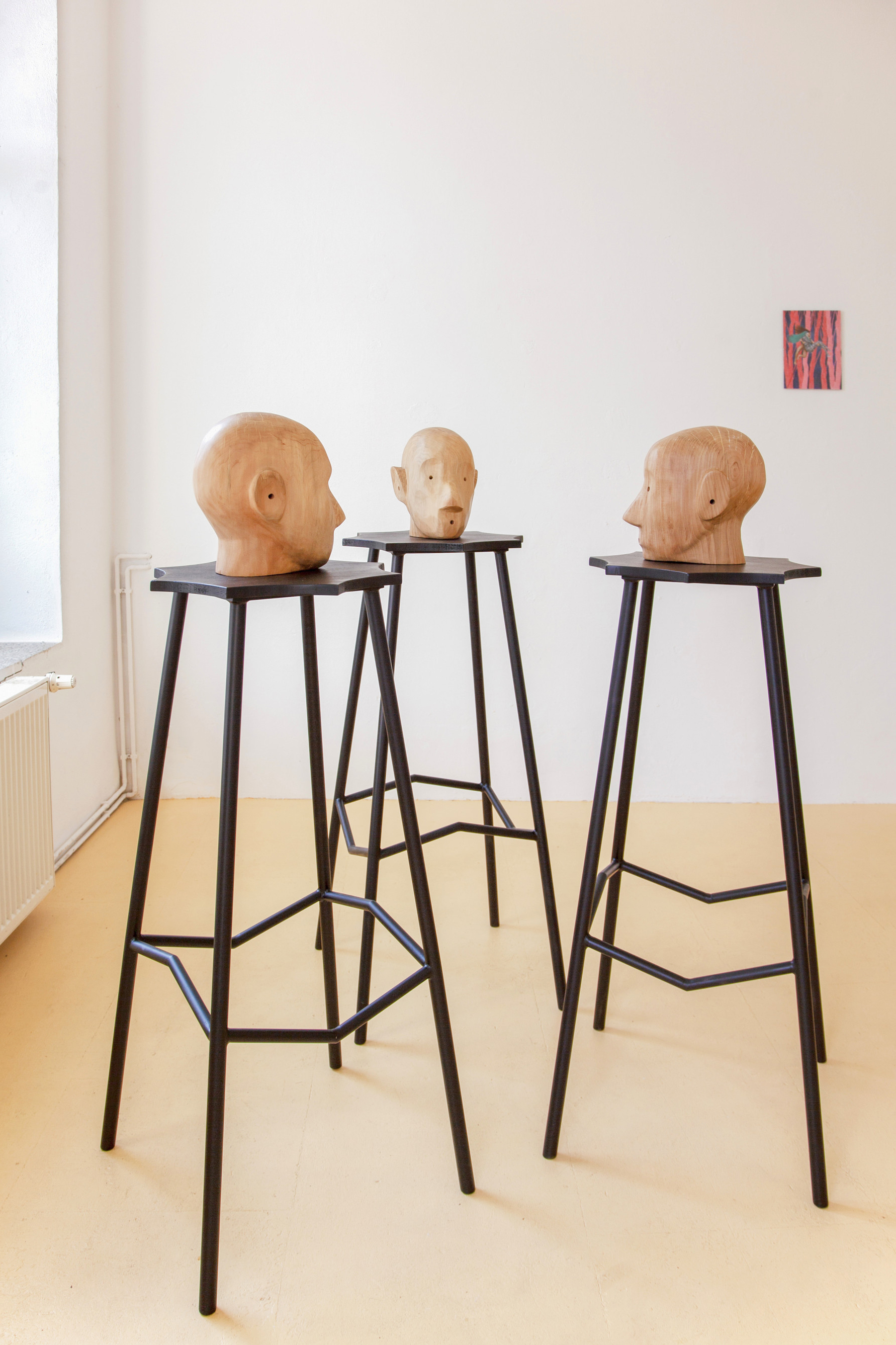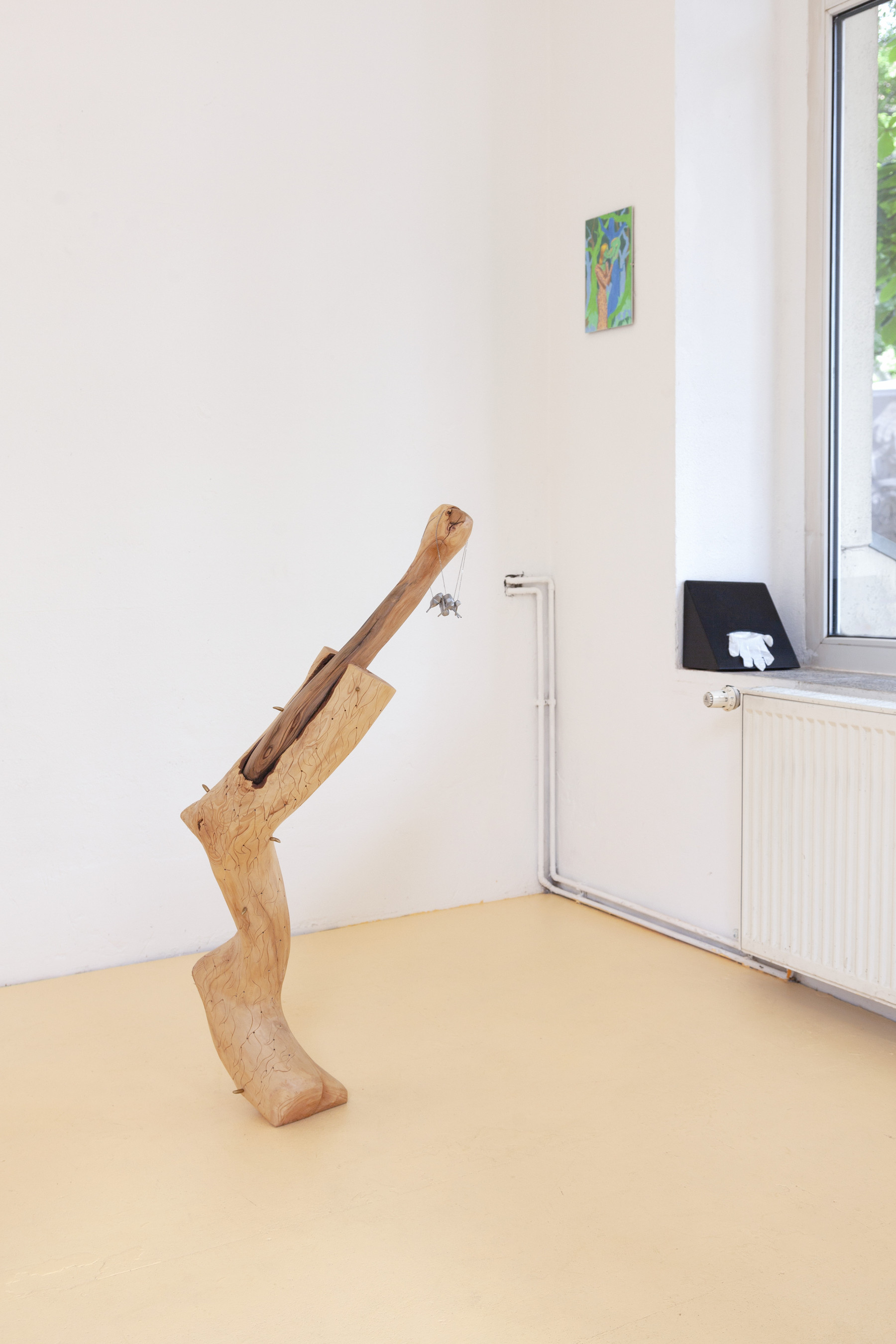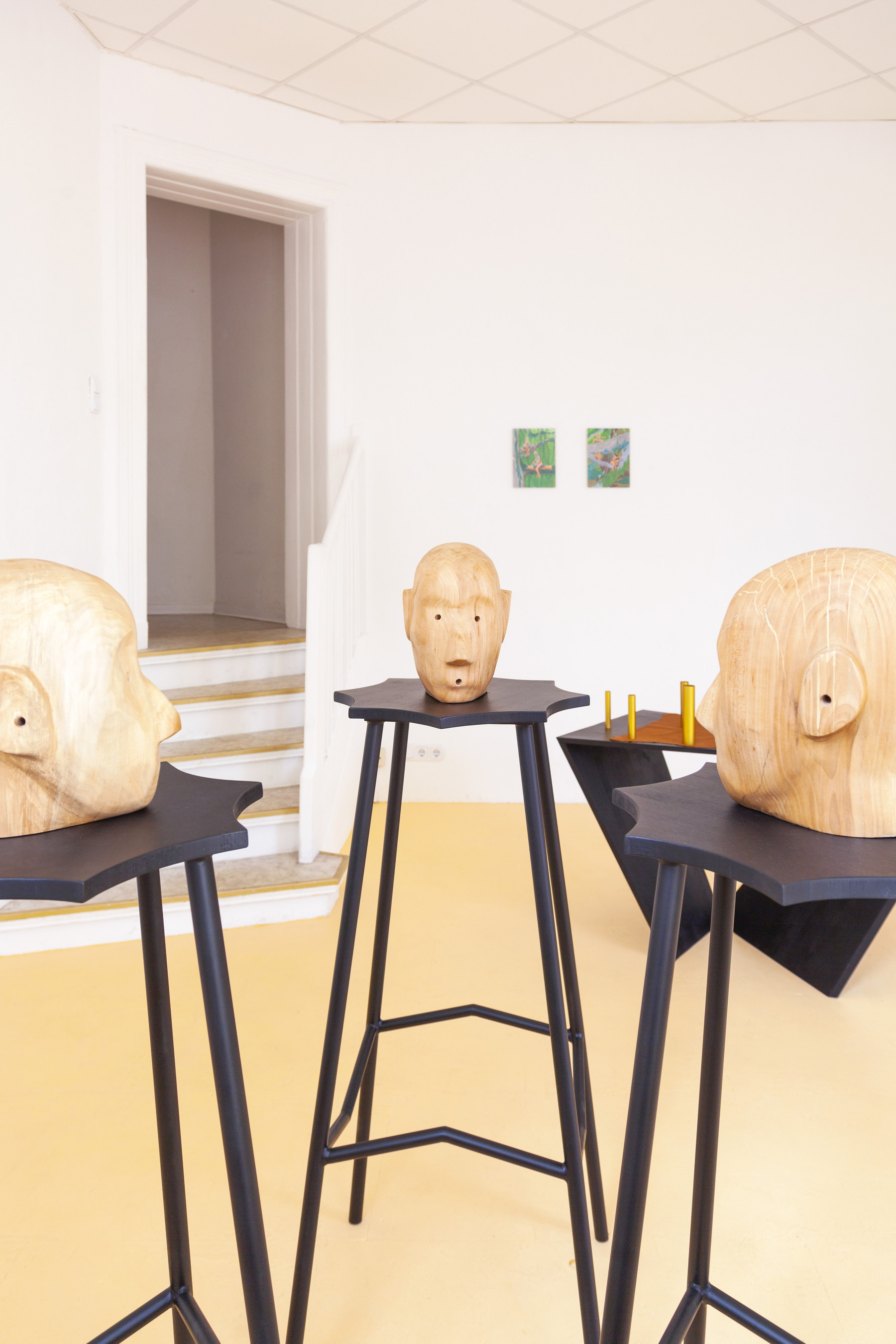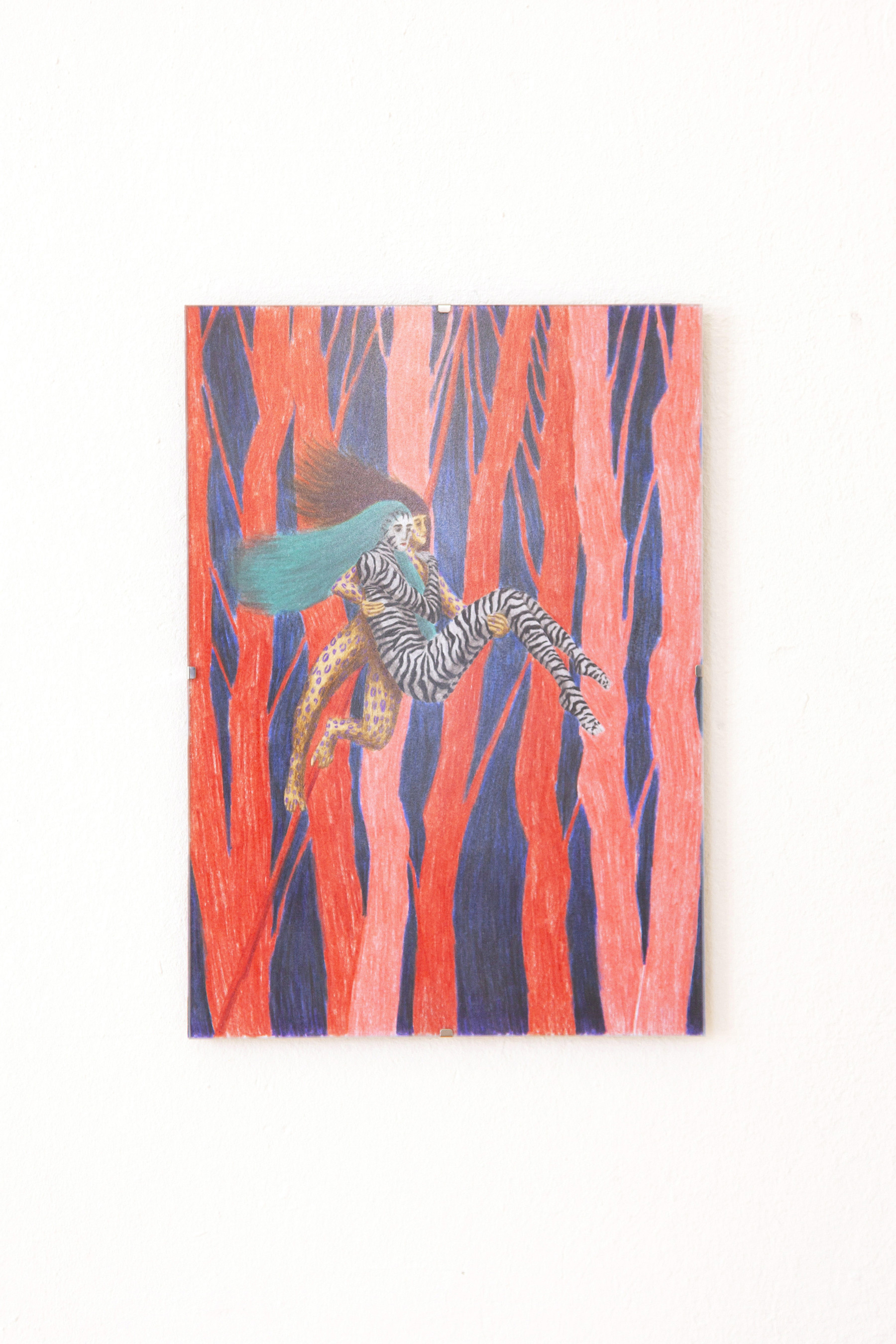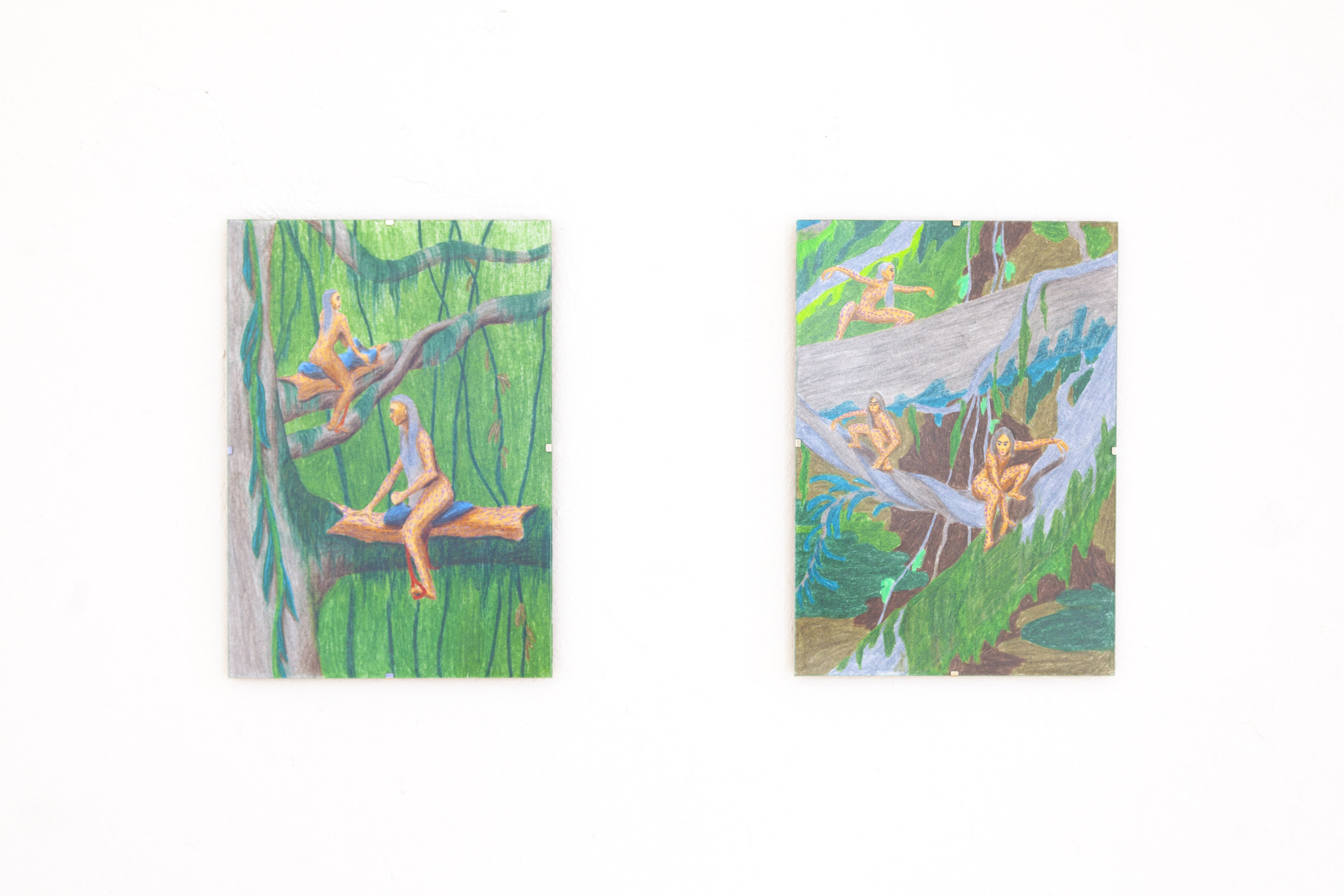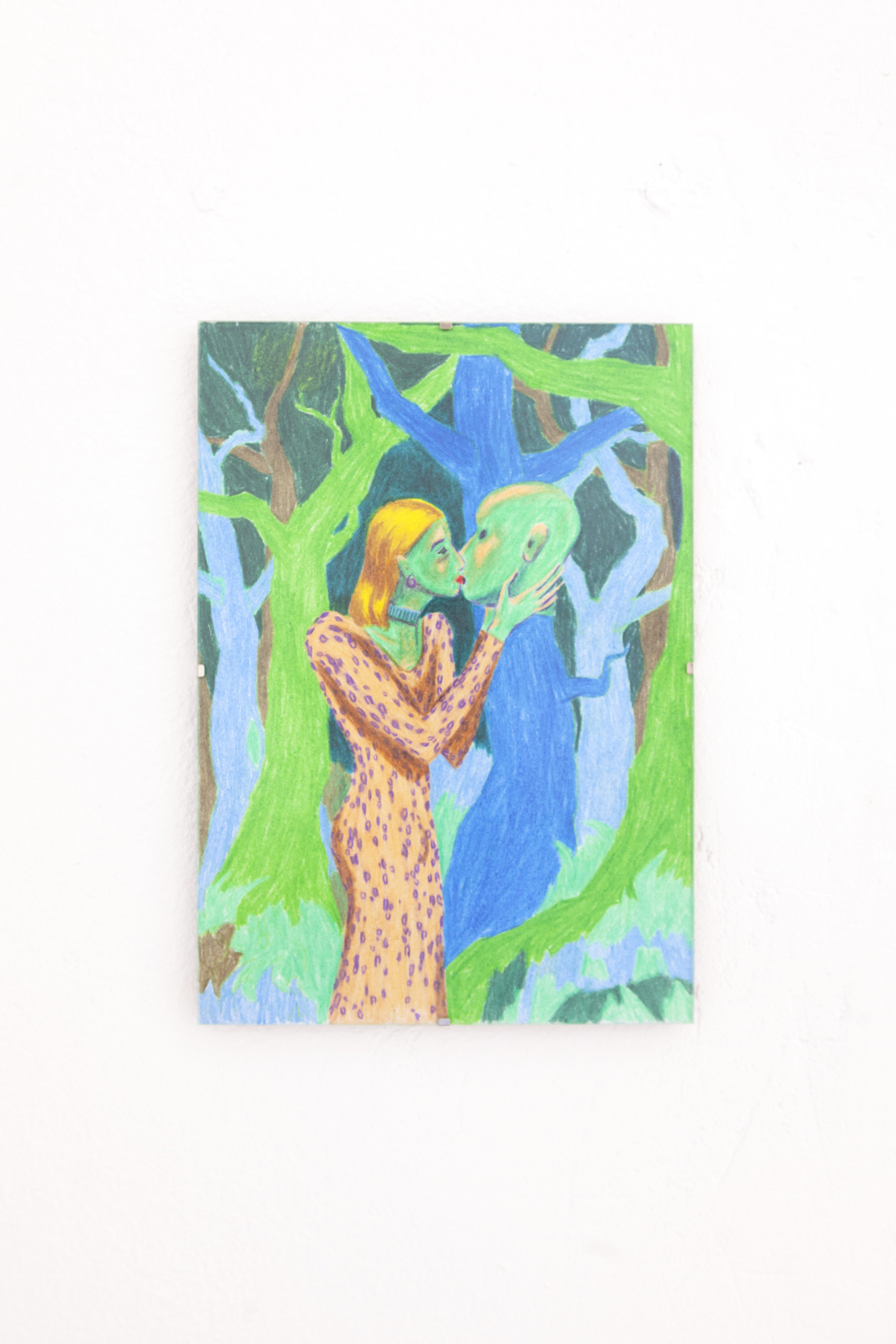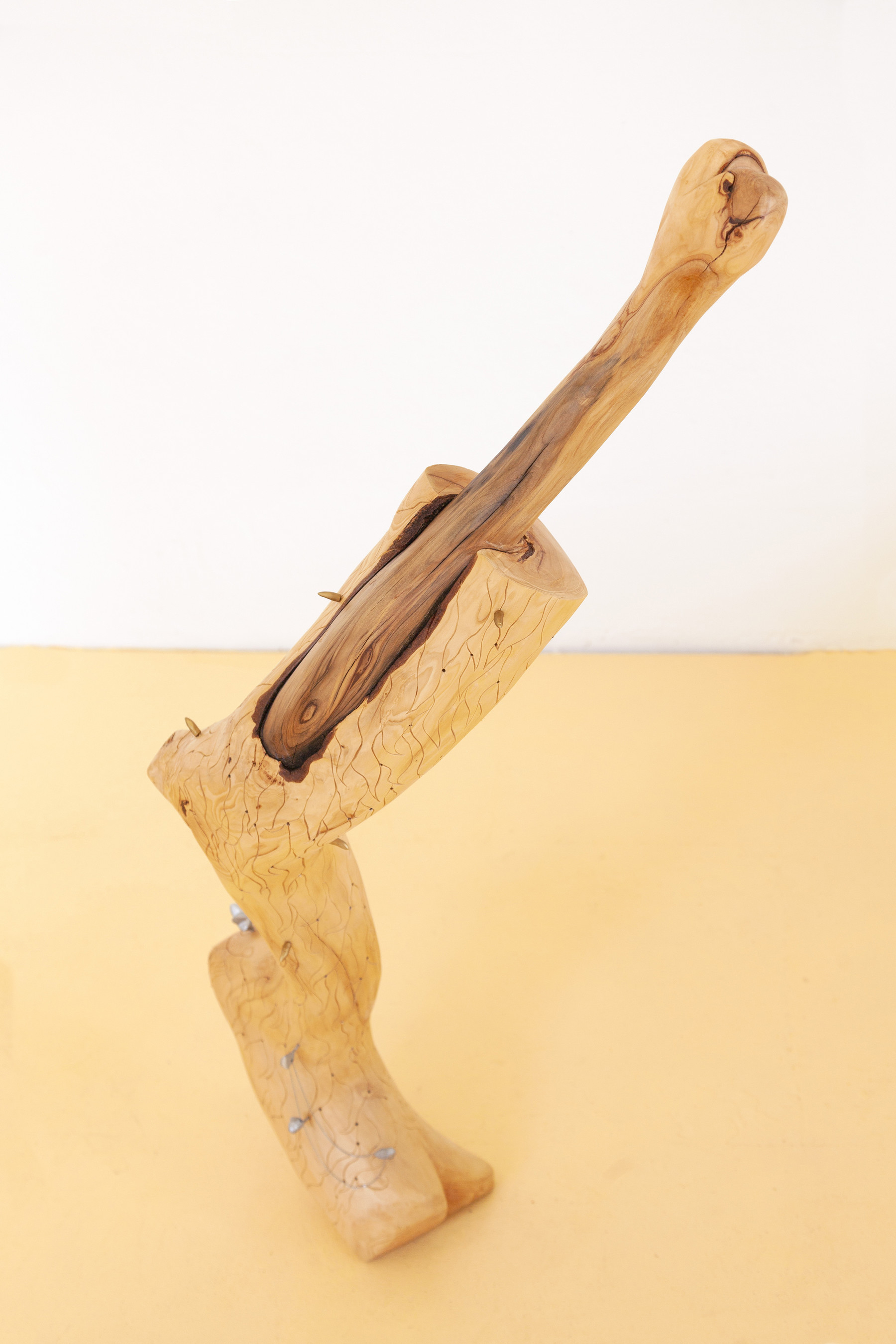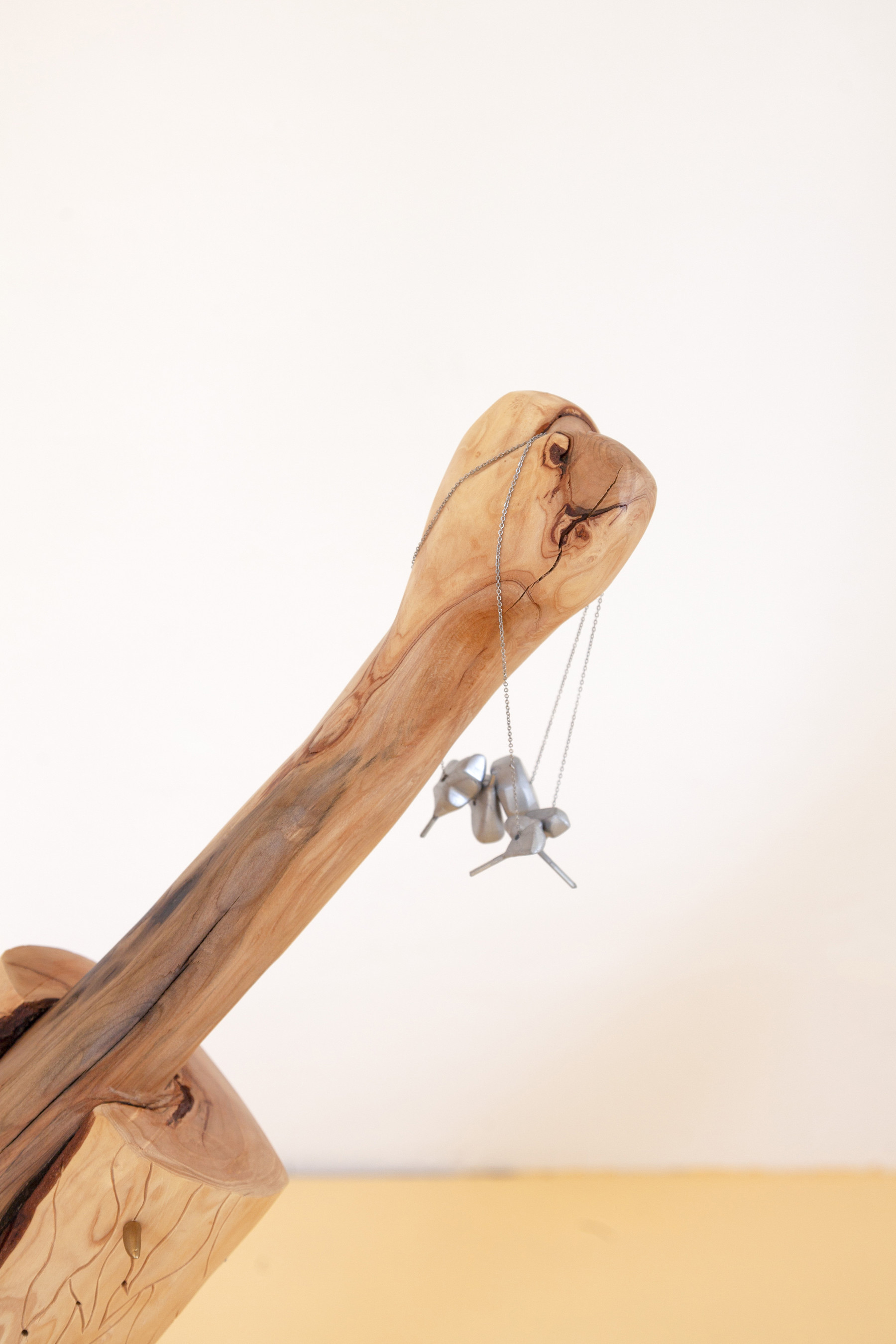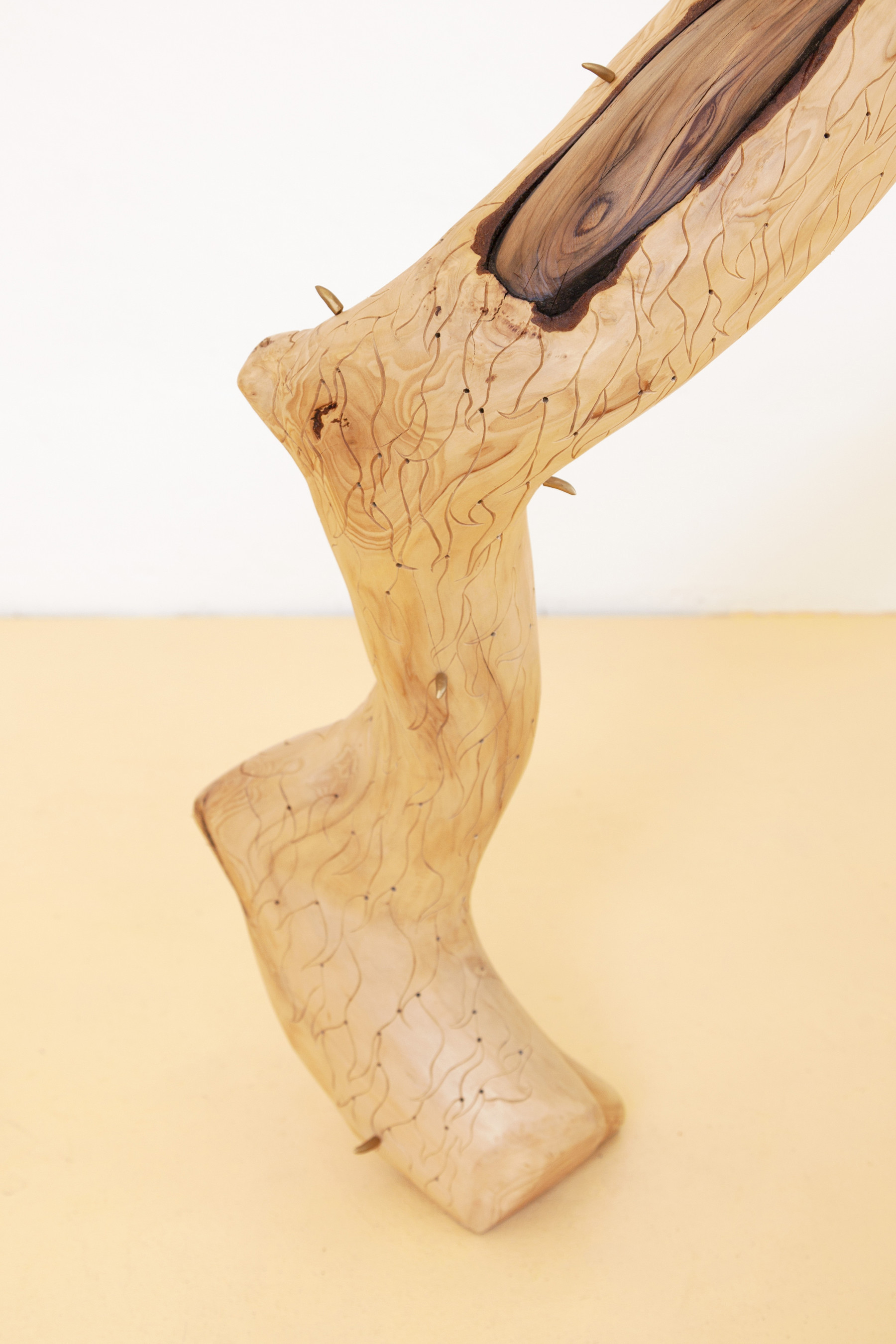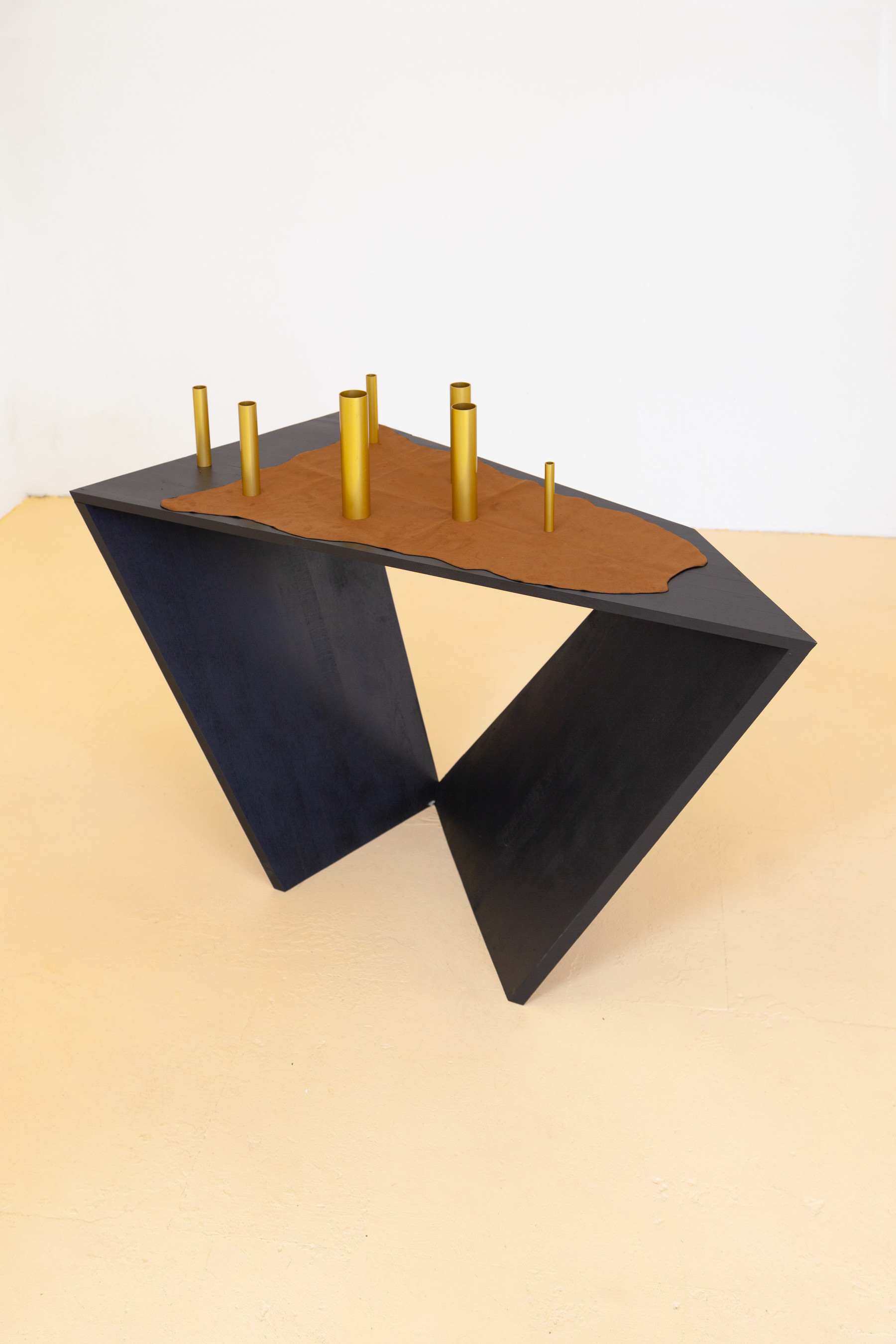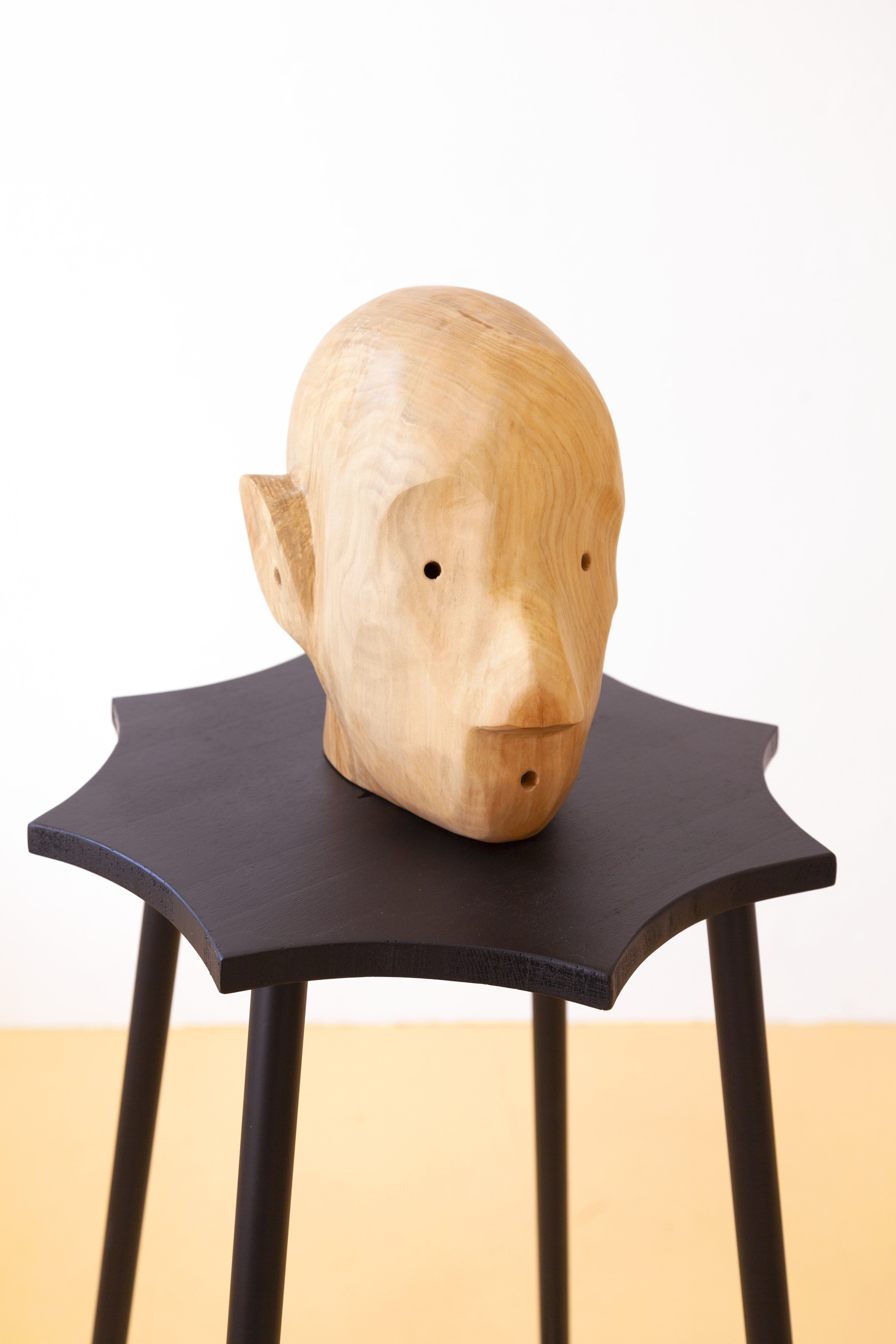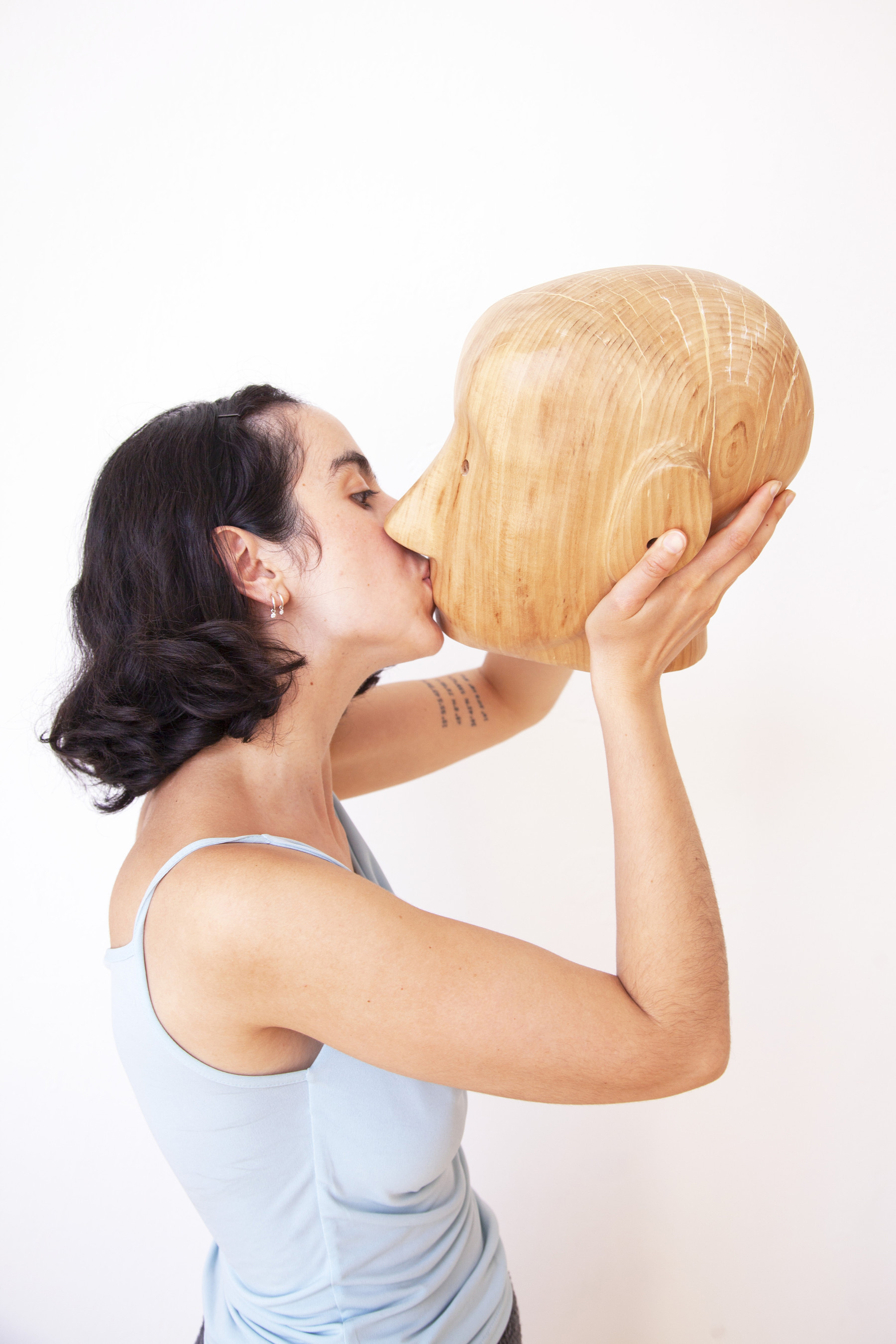TOYS
Isa Schieche
06.06.2020—04.07.2020
Eisenbahnstr. 141a, Leipzig
Let’s start with a simple statement: TOYS take up space.
Just like any individual or physical object they have a three-dimensional presence and require a certain amount of surface area as well as they depend upon a form of interaction.
They want to be played with—very carelessly, mostly without a clear goal.
Of course, you can create a goal when playing with your toy, but the toy does not specify a goal itself. But what happens when we commit to or engage in playing a game (with the toy)? Games, as we know them, are a playful tool to bring together, to challenge, to occupy.
They are inherently centered around the stimulation of the brain and body, the finding of strategies as well as they are about the building of community when pursued together with others. Ultimately, games can serve as models in which all participants are equal and undefined by prior characteristics or identity markers. For now, we see the game as a moment of potential, a thing we can learn from. We see toys as representatives for independent entities that need to be activated and animated.
In the case of Isa Schieche’s exhibition, these assumptions just stated above start to work as a preliminary impulse facilitating further discussions around the politics of identity and encounters on equal terms. These very fundamental matters, however, approached in a very playful way, are first presented to the visitors in the form of various sculptural interventions positioned throughout the space and which are all meant for use and closer inspection. They can be touched and experienced. The four wooden objects resembling heads can even produce sounds and thus function like instruments. With this offer to experiment, to play, the artist challenges the visitors to make full use of their senses, offering a rare meeting point and unusual encounter with her sculptural works. She deconstructs an often felt hierarchy between the visitor, object, and subject in the context of a contemporary art exhibition.
Besides these joyful toys, one also finds two games, again disguised as sculptures. The two—one looking like a broken wooden leg, the other like a table with a rolled out field and a golden apparatus on it—further emphasize on group dynamics, group effort, and spatial principles. They comment on theories of what it means to work together, taking into consideration aspects of hindrance as well as access. While on the table all figures belong to every player, the second game raises questions of what it means to “win” and what it takes to get there. Hinting to struggles and challenges one is facing as part of a community, they interrogate our obsession with categories such as failure and success.
In a different layer to the show and yet in direct correspondence to the rest of the installation, the sculptural interventions are being framed by several drawings on the walls of the room. With motifs depicting heroic human-like jungle creatures covered in animal patterns, the artist mixes details from personal experiences and fictions with aspects evolving around the claiming of certain territories. Ultimately connecting thoughts linked to gender and its binaries, the colour pencil drawings put focus on the objectification and modification of given subjects and their bodies.
Perpetuating a constant ambivalence between wanting/needing, active/passive, give/take win/lose, all works in the exhibition, in one way or another, consider the difficulties of shared spaces and moving within such as an individual.
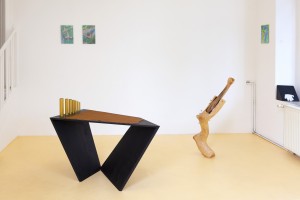
La gamba del diavolo, 2019/2020
root wood, steel, aluminum, varnish
Brad, Jeff, Jack and John, 2019/2020
4 lime wood heads, 4 bar stools, metal, wood
O (fair version), 2020
7 anodised aluminum pipes, wooden table, hunting calf imitation
Saviour, 2020
colour pencil on paper, A4
Vertigo, 2020
colour pencil on paper, A4
Jane, 2020
colour pencil on paper, A4
Intimacies, 2020
colour pencil on paper, A4

